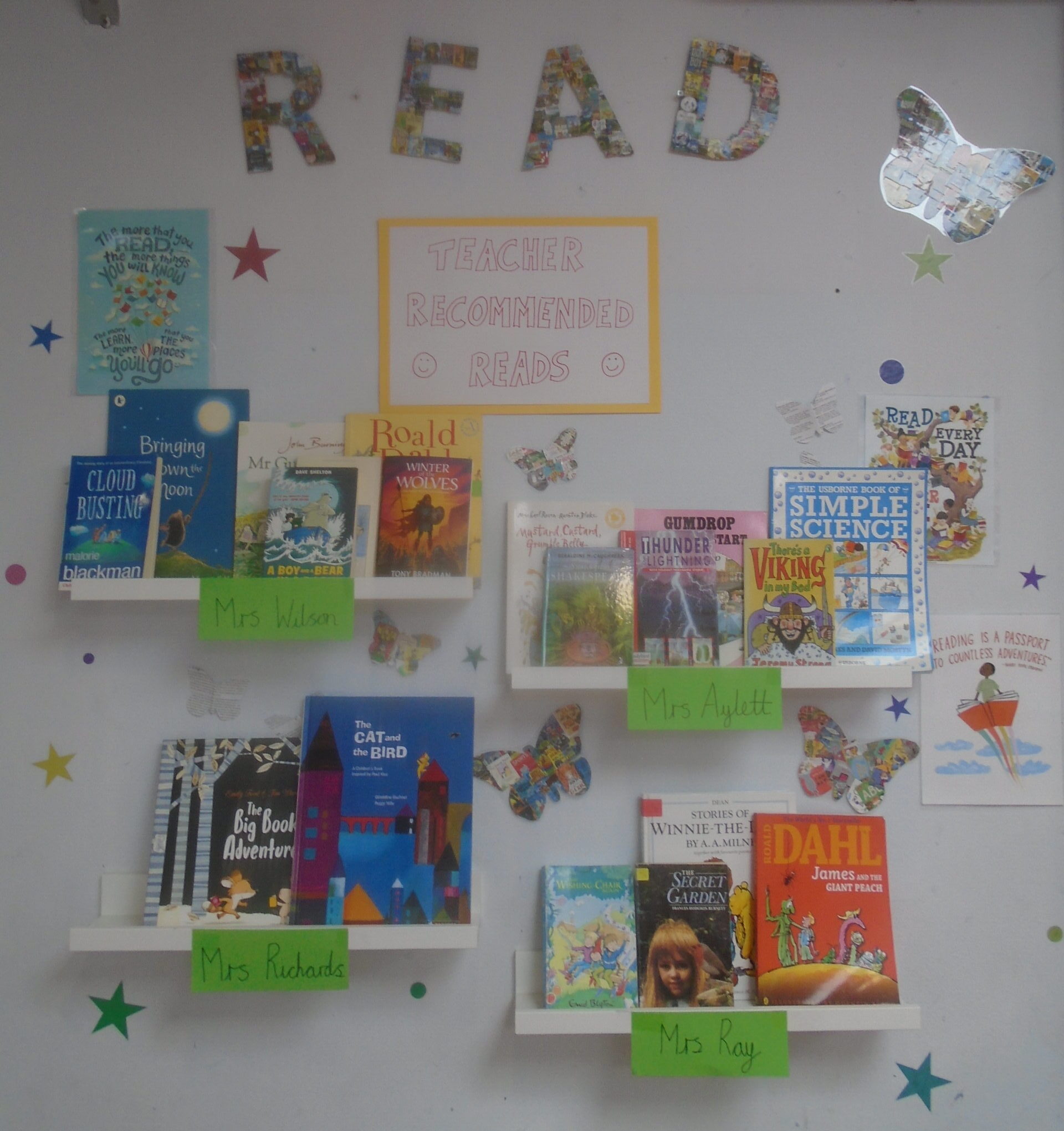Reading
Implementation
- Reading Independently
- Reading Aloud
- Book Talk
- Social Reading Environments
Reading Independently
Pupils are taught to read using the Essential Letters and Sounds phonic scheme. Please see our Phonics page.
Once pupils have completed the reading scheme, they are considered ‘free readers’ and can choose from a range of books available in class libraries, and the main school library. Pupils have access to a range of genres and text types. The school library has fiction books organised by age groups to enabled pupils to choose suitable books for themselves as a ‘free reader’. Teachers are involved in the choosing process when needed, and promote their love of reading through recommendations.
Reading Aloud
Teachers read aloud to their class every day. This can be fiction, non-fiction, poetry, topic related… anything at all! Pupil voice is used to recommend books read aloud, particularly in the lower school.
Each class chooses an ‘Author of the Term’ and a range of books by this author are promoted and read aloud in the classroom. Pupils can then read these books for themselves during either Continuous Provision (EYFS & KS1), or Book Enjoyment Time (KS2) and these books may be borrowed.
In KS2, whole class reads are chosen to be read aloud by teachers and pupils, and are used for furthering comprehension and vocabulary skills.
Book Talk
Book Talk is promoted through all our reading. When pupils are heard read by an adult, they are encouraged to discuss their likes and dislikes about a book. If pupils have read a book they like, they are encouraged to display it and in KS2, they might write a ‘recommendation’ next to a book so that others might then read it as well.
Book Talk is encouraged through paired reading and discussion during Book Enjoyment times. Lower and upper school classes often mix for paired reading so they can discuss books and enjoy them together.
Books are revisited so that children can recall what they have enjoyed and make links between different books they have read.
Social Reading Environments
As part of Continuous Provision, lower school classes have reading areas as well as baskets of books to promote reading through every area of learning. In upper school classes, class libraries are well stocked and sorted by genre. Displays are used to encourage book recommendations, favourite authors and topic books.




